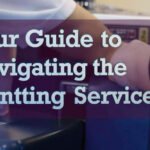
- comelyweb@gmail.com
- Compose Business Proposal
- August 24, 2025
- No Comments
Writing a Business Proposal That Actually Wins Work
Let’s be honest. The words “business proposal” can send shivers down the spine of even the most seasoned entrepreneur. Visions of dense, wordy documents that no one reads start dancing in our heads. We envision hours of hard work being sent into the digital space
But what if we reframe what a proposal really is? This is not a formal matter. This is not a report. This is not a contract (although it leads to one).
A business proposal is your strategic argument, your story, and your handshake, all wrapped up in one powerful document. This is your chance to move from just another option to becoming a clear, reliable solution.
Whether you’re a freelance graphic designer, a construction firm bidding on a new project, or a SaaS company looking to land an enterprise client, the fundamentals of a winning proposal remain the same. This guide will show you step-by-step how to write a proposal that doesn’t just inform—it persuades, excites, and wins.
Table of Contents
ToggleFoundation: It begins before a single word is written.
You wouldn’t build a house without a blueprint, and you shouldn’t start writing a proposal without a foundation of understanding. Rushing to open the template and fill in the blanks is the number one reason proposals fail.
Dive deep into discovery.
Your first job is not to write. It’s listening. If possible, make an inquiry call or meet with the prospective client. Your goal is to move from the superficial “they need a website” to the basic “they need to increase online sales by 30% in the next quarter by attracting a younger demographic.”
Ask probing questions:
- What is the main objective of this project? (What does success look like a year from now?)
- What challenges have you faced in this area before?
- What is your budget limit? (This might be a tricky question, but it saves everyone time. You can frame it like, “To make sure I’m meeting your expectations, projects like this usually go from X to Y. Does this fit your vision?”)
- Who are the key decision makers, and what is their approval process?
This intelligence is the gold you’ll weave into every part of your proposal, showing that you didn’t just listen to them—you Got it them
Know your audience.
A hip tech startup proposal will have a different tone and design than one for a traditional law firm. Make your language, your illustrations, and even your design aesthetically pleasing to the people who will be reading it. Are you talking to the CEO, marketing manager, or technical committee? The CEO may care most about ROI and big-picture strategy, while the technical committee will want to look at your methodology and specs.
Anatomy of a Winning Proposal: A Section-by-Section Breakdown
Although templates may vary, every effective proposal has these basic ingredients. Think of them as a narrative journey for your client.
1. Title Page: First Impression Count
This is your book cover. It should be clean, professional and instantly recognizable.
- Add: Your company logo, the client’s company name, the title of the proposal (for example, “Digital Marketing Strategy Proposal for [Client Name]”), the date and your contact information.
- Pro tip: Add a powerful, client-centric subtitle like “Plan to Increase Lead Generation by 40%” to grab their interest immediately.
2. Executive Summary: The “Why” in a Nutshell
Here’s a secret: Too many busy executives only Read the executive summary. It should be compelling enough to make them want to read the rest. Write this section. The last, after you finish the entire proposal.
- What to include: A brief summary of the client’s problem, your proposed solution, and the key benefits they will realize. Importantly, describe the investment and underlying ROI.
- Keep it short: Not more than one page. Use bullet points for easy scanning.
3. Problem Statement: Prove that you were listening.
This is where you demonstrate your deep understanding. In your client’s own words (from your discovery call), describe the challenges and opportunities they are facing.
- Why it works: It creates instant empathy and trust. You are saying, “I see your pain, and I understand it.” It’s not about you anymore. sale; It’s about them the need.
4. Proposed Solution: Your Moment to Shine
This is the heart of your proposal. Here, you explain exactly how you will solve the problem you just mentioned.
- Be specific and benefits-based: Don’t just say “web design services.” Say, “We’ll design a modern, mobile-responsive e-commerce website that features a streamlined, one-page checkout process to reduce cart abandonment and increase conversion rates.”
- Break it down: Use subheadings for each major component of your solution (eg, “Phase 1: Research and Strategy,” “Phase 2: Design and Development,” “Phase 3: Launch and Training”).
5. Scope of work and deliverables: Setting crystal clear expectations
This is the most important part to avoid scope reduction and future disagreements. It must be carefully detailed.
- Deliverables: List each tangible item the client received. (For example, “3 homepage design mockups,” “5 blog posts of 1000 words each,” “fully installed and configured software platform”).
- Timeline: Provide a clear project timeline with key milestones and dates. A visual Gantt chart is incredibly effective here.
- Assumptions and Exclusions: Be very clear about what is what No Included (eg, “This price assumes all copy is provided by the client by X date,” “Hosting and domain registration fees are not included.”).
6. YOUR INVESTMENT: VALUE WITH CONFIDENCE
How you present value is important. Don’t just slap a number at the end of a document.
- Package Options (Gold/Silver/Bronze Models): Whenever possible, offer 2-3 packages. This does two things: it gives the client a sense of choice and control, and it can often upsell them from basic to premium packages. Clearly state what each one involves.
- Pricing Table: Make it easy to read. Break down the costs of each package or stage.
- Justify the value: Anchor the price back to the ROI. Briefly remind them what this investment will help them achieve, save or achieve. Use confident language. Say “your investment” or “required budget”, not “this cost”.
7. About us: Why you? (Social Proof Section)
It’s not just your company history. This is your chance to build credibility and rapport.
- Keep it short: A short paragraph on your company’s mission and why you are passionate about this type of work.
- Social proof: Include a few short, powerful testimonials from past customers. Even better if they are relevant to the project at hand. Case studies are the gold here.
- Team: Introduce the key people who will work on the account. A short photo and bio can make a proposal feel more personal and believable.
8. Next steps: A clear call to action
Don’t leave your client wondering what to do. Make it stupidly simple.
- Clearly describe: “To begin, please sign and date this proposal on the final page and return it to us by [date].”
- Outline what happens next: “Upon acceptance, we will schedule our project kick-off meeting and send an initial invoice for the 50% deposit.”
- Make signing easy: If possible, use an electronic signature tool like DocuSign or PandaDoc.
Final polish: Tone, design, and general flaws
A great proposal is more than the sum of its parts.
Writing in human terms
- You vs Us: Focus on the client. Use “you” and “your” more than “we” and “our.”
- Avoid jargon: Speak clearly. Your goal is to be understood, not sound smart.
- Tell a story: Structure the entire proposal as a narrative: This is where you are (the problem), this is where you want to be (the goal), and this is how we’re going to get you there (the solution).
The power of design
A well-designed proposal is easy to read and subconsciously conveys professionalism and care.
- Use a clean template: Do not use default Word documents with Times New Roman. Use a modern tool like Canva, Google Docs with headers, or specialized proposal software.
- Brand Compatibility: Use your own logo, brand colors and fonts.
- Whitespace is your friend: Do not text. Sufficient margins and line spacing make the document less cumbersome.
- visual: Use charts, graphs, and related images to break up text and illustrate points.
Pitfalls to avoid
- General, copy-pasted suggestions: This is the fastest way to pile up “no’s”. Customize each suggestion.
- To be vague: Ambiguity is the enemy of confidence. Be specific in your scope, timeline and pricing.
- Ignore instructions: If the client provides an RFP (Request for Proposal) with specific guidelines, follow them. Absolutely.
- Forgetting to Proofread: Typos and grammatical errors can scream “gotcha” and destroy confidence. Read it out loud, use a tool like Grammarly, and ask a colleague to check it.
Frequently Asked Questions (FAQ)
Q: How long should my business proposal be?
A: Not all answers are one-size-fits-all, but brevity is a virtue. A simple project may only require a 2-5 page proposal, while a complex, multi-million dollar project could understandably be 50+ pages. For most small to medium businesses, aim for 5-15 pages. The key is to be as concise as necessary without being redundant. Every sentence should have a purpose.
Q: Should I discuss pricing on the initial discovery call?
A: It’s often a good idea to discuss budget boundaries early on to make sure you’re both in the same ballpark. This saves you from writing a proposal for a $50,000 project when their budget is $5,000. You can say it tactfully: “To make sure I’m developing a proposal that meets your expectations, could you share the budget range you’ve allocated for this initiative?”
Question: What is the difference between a quote and a proposal?
A: A quote (or estimate) is simply a list of services with prices. It has no persuasion, no context and no strategy. A proposal is a persuasive document that makes a case for why the client should choose you and how you will solve their problem. It includes a quote within it but is much more comprehensive.
Q: How do I submit a proposal?
A: Whenever possible, deliver it in person or via video call. This allows you to walk the client through it, answer questions in real time and gauge their response. If that’s not possible, send her an email with a personalized message and offer to schedule a follow-up call to discuss it.
Q: What should I do if the client does not respond?
A: Don’t panic. Clients are busy. Have a polite follow-up system. Wait 3-4 business days, then send a short email: “Just following up to see if you have any questions about the proposal I sent on [date].” If you still don’t respond, you can try to follow up a week later. After that, it’s best to leave the ball in their court.
Conclusion: Your proposal as a partnership proposal
Writing a great business proposal is a skill, and like any skill, it gets better with practice and intention. This requires you to shift your mindset from salesperson to strategic partner. You’re not just asking for a sale; You’re inviting them on a journey together to solve a problem and achieve a goal.
By taking the time to truly understand your client’s world, crafting a solution that is uniquely theirs, and presenting it with clarity, confidence, and a human touch, you transform your proposal from a mere document into a powerful development tool.
So, ditch the usual templates. Open a new document. Start with what you do, not what you do. who are they And What do they need to achieve?. Do this, and you’ll stop writing proposals that get lost in the void and start writing ones that win.





